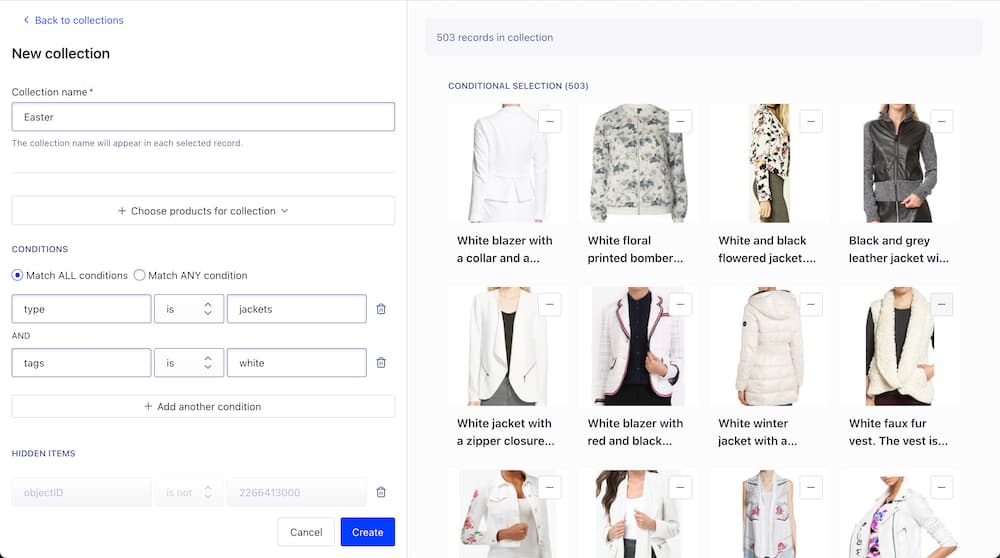Brick and mortar retailers have always adjusted their merchandising to promote seasonal items, products on sale, featured brands, and the like. This tried-and-true strategy is now solidly established in the world of e-commerce in the form of collections – pages specifically devoted to groupings of products related to a theme, or most recently, to a celebrity or influencer.
Celebrity endorsements have long been a staple of brand marketing, and now it’s become common for celebrities to establish their own brands, often with great success. Rihanna’s Fenty brand, for example, had sales of $72 million one month after launch. Or Zac Posen’s curated collection on Gap.com, which just launched recently. When an e-commerce company wants to feature brands like these, collections are the ideal approach.
Collections centered around influencers are now gaining popularity for one simple reason. Influencer content outperforms branded content, and therefore offers a lucrative sales opportunity. Since a collections page has its own URL, visitors to influencer sites can have a way to directly link to a related landing page on an e-commerce site. This, of course, involves making a deal with the influencer, where the influencer may get a percentage of all sales.
While collections pages related to celebrities and influencers are currently in the spotlight, more conventional collections continue to offer value. They lead shoppers more directly to what they want when they’re browsing (new items, summer wear, Valentine’s gifts, etc.). With the use of well-chosen keywords and diligent SEO, collections pages can improve the results of organic search. What’s more, they reduce consumer decision fatigue, which often occurs given the sheer volume of options now available on any given e-commerce site. 74% of consumers are actually walking away from purchases because they feel overwhelmed (from Accenture). This means lost sales (think: drop in conversions and increased bounce rates), frustrated customers, and missed opportunities for brands to connect with their audience.
The difference between collections and categories
Collections are sometimes referred to as categories. This can lead to confusion because collections and categories are not necessarily the same thing. To begin with, categories are fixed. They are a means of grouping a catalog’s content. For a clothing store, these might include men’s, women’s, children, and the like. Categories are often hierarchical, e.g. men’s > shirts > casual. Categories certainly help customers navigate a site more efficiently, and like collections they also have SEO value.
Collections, however, are not fixed structures. They are pages created for a specific purpose that is usually time-sensitive, e.g. a seasonal-oriented promotion. They may sometimes be a long-term fixture of a site – when they’re used to highlight sub-brands, for example – but often have a short lifespan. With only categories at their disposal, users cannot quickly create product groupings for specific campaigns or trends, leading to missed market opportunities.
Algolia Collections: a dynamic new feature

While valuable, collections can be challenging for many retailers to produce. It can entail a time-consuming process to hand pick items for each collection, and many solutions require technical users to do the work.
Algolia’s new Collections capability, announced last month, gives customers the ability to assemble dynamic collections quickly, and offers several additional benefits:
-
Increase revenue: With Algolia Collections, customers will see the most relevant products that are most likely to sell. Merchandisers can manually adjust collections, or use the built-in data-driven optimization.
-
Grow CSAT: Intuitive, themed product groupings reduce navigation friction and increase product discoverability. This improved user experience leads to higher customer satisfaction.
Collections are part of Algolia’s Merchandising Studio. If you’re looking to add Collections to your ecommerce site find out more here. To arrange for a demo, contact our team here.
AI Search
The results users need to seeAI Browse
Category and collection pages built by AIAI Recommendations
Suggestions anywhere in the user journeyAdvanced Personalization
Tailored experiences drive profitabilityMerchandising Studio
Data-enhanced customer experiences, without codeAnalytics
All your insights in one dashboardUI Components
Pre-built components for custom journeys




